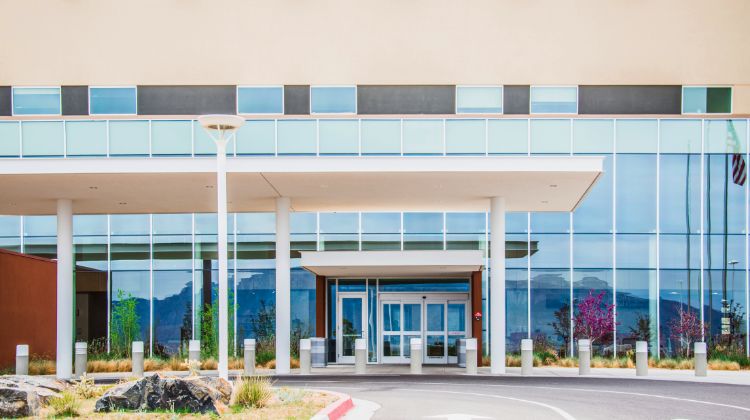The Complete the Mission Act signifies progress in veterans’ healthcare access. The bill was introduced in December, 2024, and is an extension to the Mission Act legislation that was signed into law in June 2018. The act addresses issues within the VA healthcare system. It gives veterans more healthcare choices.
In 2014, long wait times for VA appointments highlighted the need for reform. The Complete the Mission Act emerged to put veterans’ needs first. With broad support, it passed Congress with bipartisan approval. This Act strives to provide care veterans while improving access to care.
Table Of Contents:
- Key Provisions of the Complete the Mission Act
- Impact on Veterans’ Healthcare Experience
- Challenges and Considerations
- The Road Ahead
- Important Links and Data
- FAQs about Complete the Mission Act
- Conclusion
Key Provisions of the Complete the Mission Act
The 2024 Complete the Mission Act introduces vital changes and expands on the 2018 Mission Act. It impacts various aspects of veteran healthcare.
Expanded Access to Community Care
The act expands the Veterans Community Care Program. This lets eligible veterans receive care from community providers when the VA cannot timely provide it. This gives Veterans Community Care access to providers outside of the VA.
Veterans can now seek outside care if:
- The VA doesn’t offer the service.
- The veteran lives in an area without a full-service VA medical facility.
- The veteran qualifies under the “grandfather” provision.
- The VA can’t provide care within designated access standards. These access standards aim to improve care access and reduce wait times.
These options reduce wait times and improve care quality. Veterans have flexibility in choosing their healthcare providers.
New Urgent Care Benefit
The Complete the Mission Act introduces an urgent care benefit. Eligible veterans can access walk-in care for non-emergencies. This helps veterans get care for minor issues. This is particularly helpful to those with substance abuse or other urgent medical conditions, where access to care can be essential.
Caregiver Support Expansion
The act expands the Program of Comprehensive Assistance for Family Caregivers. This includes eligible veterans from all eras. This change acknowledges caregivers’ importance in veteran health. This acknowledges that family caregiver support can aid a veteran’s health, regardless of when the veteran served.
Impact on Veterans’ Healthcare Experience
The act directly impacts veterans’ lives. It strives to provide care and access to treatment where needed most. This is another example of how the Act protects veterans’ healthcare access.
Reduced Wait Times
Community care reduces wait times. Veterans needing timely care for health conditions benefit. Quicker access to necessary healthcare can improve veterans’ quality of life. The Complete the Mission Act codifies some standards from the original Mission Act, including publishing expected wait times at VA medical centers.
“My bill would rightfully make permanent the current access standards, would require VA to publish their wait times for all VA medical centers, and would establish a defined screening process for veterans in need of substance abuse treatment without the hassle and wait. Every veteran has earned timely options for quality healthcare to meet their needs – no bureaucrat is allowed to stand in the way of that.”
– House Committee on Veterans’ Affairs Chairman Mike Bost
Improved Access for Rural Veterans
Rural veterans face healthcare access challenges. Expanded community care offers solutions for receiving care. This also makes care easier to obtain if transportation is difficult for the veteran. This is part of the VA mission to ensure care access regardless of location.
Enhanced Quality of Care
The act prioritizes care quality and access. Standards for community providers and new metrics are implemented. The VA works to deliver good care inside and outside VA facilities. Quality-based community care options are a significant development in improving care.
Challenges and Considerations
The Complete the Mission Act faces challenges. Maintaining internal systems and optimizing internal systems, including ensuring VA staff is appropriately utilized, requires ongoing efforts.
Implementation Complexities
The program’s scale creates implementation difficulties. The VA is working through these complexities efficiently. Smooth implementation of all facets of the act remains a challenge. Internal systems must be flexible enough to manage access standards across various types of care options.
Balancing VA and Community Care
Balancing VA and community care is debated. The appropriate balance between maintaining internal systems and leveraging external care must be maintained. Over-reliance on community care might weaken the VA system. Internal systems need to be kept robust to deliver care efficiently to veterans.
Funding Concerns
Funding VA and community care remains crucial. The drive time for veterans must be carefully considered, with designated access standards for community care to balance cost and veteran accessibility. Securing funds supports the Veterans Community Care Program and existing Veterans Affairs care.
The Road Ahead
The act’s success depends on continuous refinement. Collaboration among the VA, Congress, and advocacy groups is essential. Working together can fulfill the promise to veterans. These efforts should consider veterans health, substance abuse treatment options, and abuse treatment access. Constant dialogue is required for how to best meet veterans needs with care providers, as access standards evolve.
Veterans should know their rights under the act. The VA offers resources like the VA Facility Locator. Veterans’ health and healthcare access should be a priority, from health care to substance abuse to mental health.
Concerned Veterans for America advocates for veterans. They offer education about the Complete the Mission Act. They help keep veterans informed about their veterans health care choices.
Important Links and Data
The VA provides resources for veterans and providers to maintain compliance with updated care services regulations. Here are some valuable tools for locating VA health providers:
- VA Facility Locator: https://www.va.gov/find-locations/
- VA Substance Use Disorder Program Locator: https://www.va.gov/directory/guide/SUD.asp
Here is a resource for veteran advocacy and education about the Complete the Mission Act:
- Concerned Veterans for America: https://cv4a.org/
FAQs about Complete the Mission Act
What did the Mission Act do?
The Mission Act expanded veterans’ healthcare options. It lets them use non-VA care in specific situations. It added urgent care benefits and more caregiver support. The Act works to provide care while meeting veterans where they are at. This allows veterans to access the health care options they need without navigating the VA bureaucracy.
What is the Act’s mission?
The VA MISSION Act aims to improve healthcare access. It wants to shorten wait times and give veterans choices. The VA Mission Act also ensures eligible veterans can receive care. The Act works to meet veterans’ various care needs. Eligibility criteria are applied so veterans who qualify can obtain community care as outlined in the Choice Program. Maintaining internal systems while expanding veterans’ access to outside care providers allows veterans living anywhere in the country to access appropriate levels of care.
What is the VA mission act 2024?
The VA MISSION Act is from 2018. It is not a new 2024 act. It refers to ongoing implementation and refinements to the existing Act. These are efforts to ensure veterans have adequate care choices.
How does the VA determine drive time?
The VA uses geomapping to calculate drive times. If a veteran’s drive time is too long, they may qualify for community care. The veteran qualifies based on certain criteria in the Choice program.
Conclusion
The Complete the Mission Act is a milestone for veterans’ healthcare. Expanding community care, new benefits, and quality focus are important features. It aims to fix problems within the VA healthcare system and ensure adequate care services.
Implementation challenges persist, but the act can transform veteran healthcare. Ongoing monitoring, addressing issues, and prioritizing veteran needs remain vital. This ensures that the care services the Act strives to provide truly protect veterans’ health, offering flexibility in care options. Holding VA accountable to veterans is critical to improving care options for mental health care, health care, and substance abuse.
Veterans served our country. The Complete the Mission Act helps repay them. It aims to deliver the timely, quality healthcare they deserve. It works toward improved care access and healthcare options.



